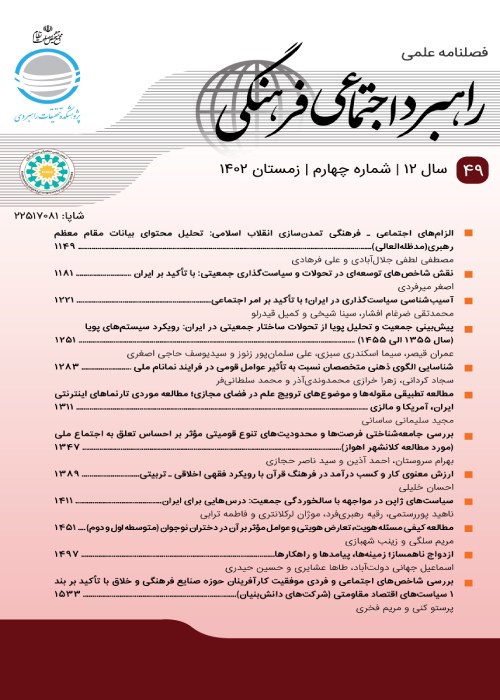Quantitative analysis of the sources of soft power of the Islamic Republic of Iran in the document of components of Iranian national identity
Identifying sources of soft power is one of the important issues to which political actors have been sensitive in recent decades, and government officials are focused on policy in the field of sources of power. The first step in the process of upgrading the soft power of countries is to recognize the internal and external sources of power. To this end, the present article attempts to examine the sources of soft power of the Islamic Republic of Iran and, on a case-by-case basis, to examine the components of the national identity of Iranians. The present article uses documentary studies and the theoretical model of the three sources of soft power to try to answer the question that; What are the sources of soft power of the Islamic Republic of Iran in the document of the components of the national identity of Iranians and what are the components? The research method of this article is quantitative content analysis with the unit approach of word analysis in the document of components of Iranian national identity. The findings of the article show that there are three political, scientific and cultural sources in this document, some of which are; National unity, cultural convergence with the Islamic world, global mission, political dignity and governorship, scientific productions, Islamic-Iranian identity, historical and cultural heritage, religion, Persian language, etc., which can pay attention to the national power of Iran. Add on internal and external surfaces.
-
دولت بعث و امام خمینی(ره) (1357 - 1347خ)
نشریه مطالعات تاریخی، پاییز 1402



